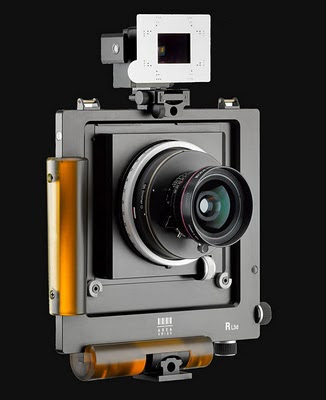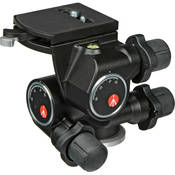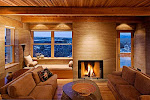
“Need a few more million?”
“The RL3d is the dream camera for 4x5” photography”
“A universal system with modular elements”
The new RL3d is available now!
This state-of-the-art professional viewfinder camera comes equipped with new functions for making great high-resolution images both digitally and on film. Following the success of the Rm3d, ARCA-SWISS has introduced the RL3d, a universal camera with increased shift, opening up new horizons by enabling you to take images in multiple formats up to 4x5.”
Capture the real moment
Ever dreamed of a few more million? Or wished for higher resolution? The RL3d, with its ability to produce images of over 200 Mb, will make your dreams come true. It allows you to take fantastic quality images – from medium format to 4x5” - with the utmost ease and efficiency, using a high precision hand-held camera.
Despite its solidly build quality, the RL3d remains light and compact and ideal for location photography.
The ARCA-SWISS R-Line has six exceptional functions to improve efficiency and ergonomics and help you capture all sorts of images:
- All In Plane vertical and horizontal shift
- An integrated ± 5° horizontal or vertical tilt function to provide optimum sharpness where required (Scheimpflug effect)
- Focus distance can be measured and displayed electronically
- Camera level can be found electronically* or using conventional spirit levels
- The camera comes equipped with focus sensors; framing is achieved using the new variable Vario viewfinder which covers focal lengths from 23 – 210mm.
- Lenses are fitted onto the ARCA-SWISS R via an exclusive bayonet mount. By equipping lenses with a bayonet mount and by opting to link the optical system to the helical focus mount, they can be used both on the RL3d and Rm3D, as well as a bellows camera.
* via the electronic module. An optional accessory. For further information, see page 3
Versatile
Photographers using the RL3d will be able to take pictures on film or digitally in a multitude of formats up to 4x5”. Thanks to ARCA-SWISS’ wide selection of interface plates it is possible to take anything from medium format
images through to panoramas. The extraordinary versatility of the modular ARCA-SWISS photographic system
enables you to use elements from the F- and M-Line cameras as well as a binocular viewer, lens hoods, bellows and other accessories to significantly enhance the functionality of the ARCA-SWISS R-Line.
The optional electronic module extends its versatility even farther as it electronically calculates and displays data relating to level, distance from the subject and focused distance, as well as depth of field.
The quality of the image is determined by the choice of digital or film back, and by the type of film or format selected. It is easy to use as a hand-held camera and enables you to do away with a tripod, particularly in tricky situations such as construction sites, working on scaffolding or even on ladders.
RL3d® technical specifications
Horizontal Shift 40 mm (20/20)
Vertical Shift 50 mm (10/40)
Tilt (horizontal or vertical) ± 5°
Weight (body only) 1500 gr
List Price $ 6490
(body, international back with ground glass and Fresnel lens)
Why stop there!
The ability to shift the lens has eliminated perspective distortion and the tilt or swing movement has extended the depth of field. The integrated bubble levels make it easy to keep the camera level, ensuring images are perfectly straight and accurately reflect reality. The shape and position of the hand grips make it easy to switch between landscape and portrait without having to change the position of the viewfinder or back.
Lenses are mounted using the exclusive ARCA-SWISS R bayonet system attached to a helical focus mount.
Its large diameter does not restrict the choice of lenses. The micro-precision helical focus mount, which has precise control using 1/100mm increments, is part of the R-line body guaranteeing extreme precision. The very bright multi-focal zoom viewfinder eliminates stray light and informs the photographer what movements are required. It also offers tips: points of light appear in the viewfinder generated by the format mask to indicate the amount of shift required. Each point of light equates to 5 mm of shift. The viewfinder bracket is identical to the tripod bracket, enabling the photographer to turn the camera over and thus achieve the maximum amount of shift both upward and downward.
All cameras come equipped with focus sensors. The electronic functions are provided by a separate optional electronic module that provides a wealth of information! It uses a ultrasonic device to measure the distance between the camera and the subject and also provides information on the distance on the focus ramp, the depth of field covering four F-stops and the camera level in any position.
The ARCA-SWISS R-Line cameras come with two built-in tripod mounts for regular or up-side-down configuration, but can be also slid onto a monorail to attach a bellows for the use of longer focal lengths. The R-Line extension kit provides a variable extension for use on long focal lengths or for still lifes.
The unique ARCA-SWISS Rotaslide® sliding back enables you to switch quickly between ground glass and digital back. This sliding back also enables you to rotate the digital back from landscape to portrait without having to remove it.
A wide selection of film and digital backs can be fitted to the ARCA-SWISS RL3d. A high-quality camera for high precision, high quality work!
Press contact: Maud Huot-Marchand - Email: comm.arca-swiss@orange.fr
MY thoughts:
Really sweet camera. I know of a couple of top notch commercial architectural photographers who are planning on buying one. They really are
the state of the art.However, I'm not likely to be one of those purchasers unless I win the lottery, but heck if I win the lottery I can quit doing commercial work and just shoot my personal work on my beloved 4x5 Phillips and film! Frankly for commercial work, I do just fine carefully using a DSLR. A 21mp camera produces files that many of my clients consider are too large and the new Canon T/S lenses are superb.
Now, if I actually got the chance to try one out, it might totally seduce me.............maybe. I think not. Using the Canon 5D II and T/S lenses is so effortless and fun, creativity just flows.
I have never bought into the idea that you have to buy very expensive equipment to impress your clients. Heck in the view camera/film days I used a $175 used Calumet Wide Field for 15 years (and not at the beginning of my career either, but something like 1991-2006). What if-HEAVEN FORBID-your client owns a better camera than you do? Its not about who owns the best equipment-but about who can
SEE architecture and utilize equipment to make that vision a reality.



















